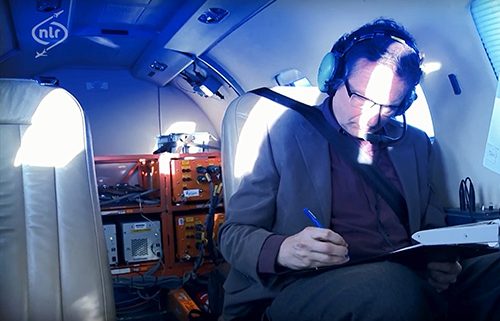NLR and Delft University of Technology have joined forces to develop a system that enables aircraft performing a Continuous Descent Operations (CDO), or ‘gliding flight’, to arrive at their destination in time. NLR has tested this so-called TEMO system (Time and Energy Managed Operations) using its Cessna Citation II test aircraft during various approaches to Groningen Airport Eelde in the north of the Netherlands. The test flights were performed with support from Universitat Politècnica de Catalunya, PildoLabs and the Royal Netherlands Meteorological Institute (KNMI). The development of the TEMO system was co-financed under the Clean Sky Joint Technology Initiative research programme, as part of the Systems for Green Operations Integrated Technology Demonstrator.
CDOs have several major benefits: they allow aircraft to produce less noise and consume less fuel, which in turn results in lower CO2Â emissions. However, the drawback is that a greater distance must be maintained for safety reasons between aircraft performing CDOs, which limits the airport’s flight handling capacity. At Amsterdam Airport Schiphol, for instance, CDOs are therefore only performed at night. The TEMO system makes it possible to execute CDOs without affecting the punctuality of the flight and thus the capacity of the airport.
The TEMO system calculates an optimum ‘gliding flight’ approach path, taking into account the capabilities of the aircraft, the desired time of arrival, and the weather forecast. The resulting descent plan is executed by controlling the aircraft’s elevator flaps using an experimental Fly-by-Wire control system. Thrust and air brakes are used as little as possible during the descent. Several variants have been tested in order to compensate for deviations from the calculated descent plan. The results of the test flights at Groningen Airport Eelde showed that deviations of less than ten seconds from the planned time of arrival are possible.
NLR has worked on the development of this technology for years, and has completed all TRL phases (Technology Readiness Level) up to and including TRL phase 5. These flight tests demonstrate that the TEMO system also works in practice. The next step will consist of integrating the system in the existing cockpit architecture.
For more information, please refer to this video about the TEMO system and our blog post about CDOs


